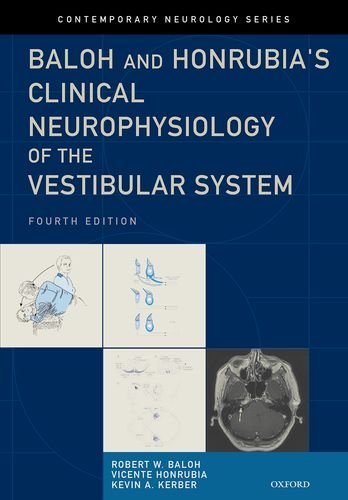نوروفیزیولوژی بالینی سیستم دهلیزی در بالو و هنروبیا ۲۰۱۰
Baloh and Honrubia’s Clinical Neurophysiology of the Vestibular System 2010
دانلود کتاب نوروفیزیولوژی بالینی سیستم دهلیزی در بالو و هنروبیا ۲۰۱۰ (Baloh and Honrubia’s Clinical Neurophysiology of the Vestibular System 2010) با لینک مستقیم و فرمت pdf (پی دی اف)
| نویسنده |
Kevin A. Kerber MD, Kevin Kerber, MD, Robert W. Baloh MD Faan, Vicente Honrubia MD Dmsc |
|---|
| تعداد صفحهها |
480 |
|---|---|
| نوع فایل |
|
| حجم |
6 Mb |
| سال انتشار |
2010 |
89,000 تومان
معرفی کتاب نوروفیزیولوژی بالینی سیستم دهلیزی در بالو و هنروبیا ۲۰۱۰
این کتاب چارچوبی برای درک پاتوفیزیولوژی بیماری های مربوط به سیستم دهلیزی ارائه می دهد. این کتاب به چهار بخش تقسیم شده است: 1. آناتومی و عملکرد دستگاه دهلیزی. دوما. ارزیابی سرگیجه بیمار. سوم. تشخیص و درمان اختلالات عصبی رایج؛ و چهارمی. درمان علائم سرگیجه. بخش اول به بررسی آناتومی و عملکرد سیستم دهلیزی با تاکید بر مواد مرتبط بالینی می پردازد. بخش دوم ویژگی های مهمی را در شرح حال، معاینه و ارزیابی آزمایشگاهی بیمار که محل احتمالی عفونت را تعیین می کند، توضیح می دهد. بخش سوم نکات تشخیصی افتراقی را پوشش می دهد که به پزشک کمک می کند تا علت مشکل بیمار را تعیین کند و آن را درمان کند. بخش IV داروهای رایج ضد استفراغ و ضد استفراغ و منطق تمرینات دهلیزی را شرح می دهد. پیشرفت های اخیر در علوم دهلیزی بررسی می شود. این کتاب برای تمام پزشکانی که بیمارانی را که از سرگیجه شکایت دارند مطالعه و درمان می کنند مفید است.



